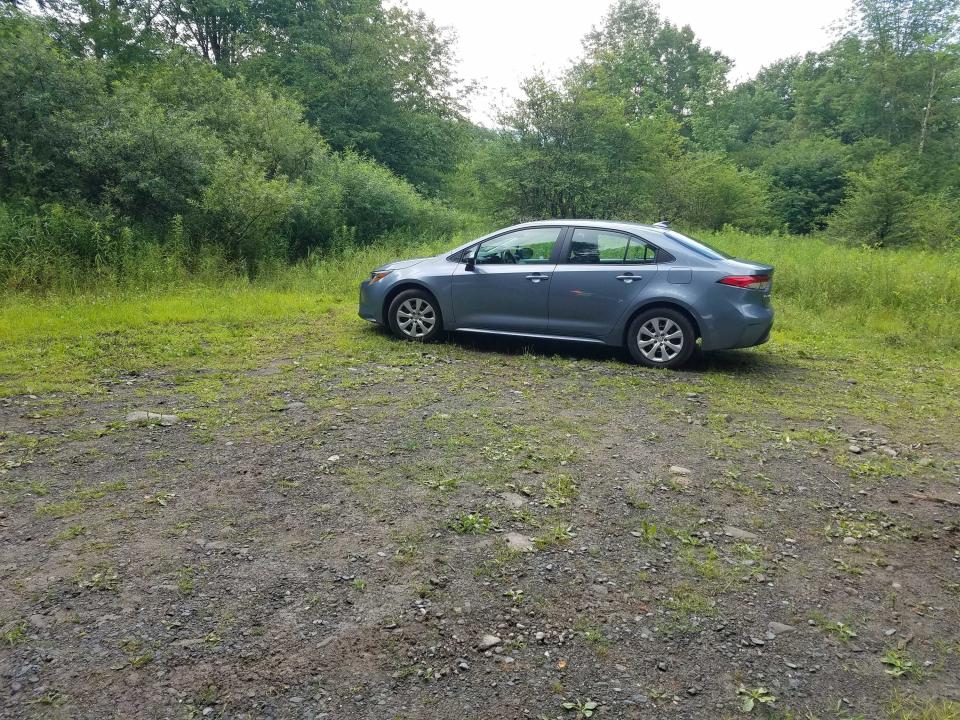Why did a crazed gunman take his own life in a remote N.Y. town after killing spree?
Nestled within the foothills of the Catskill Mountains rests the sleepy village of Roscoe, New York, one of the premiere fishing destinations in the country. Anglers from around the globe come here to explore its pristine waters, some in search of the elusive "two headed trout" of local legend.
But recently, this bucolic setting has become the backdrop of a multistate manhunt for a cold-blooded killer, Roy Den Hollander, 72, whose cross-country killing spree ended on a dirt road just north of Roscoe's Beaverkill River.
"This is Trout Town USA," says local stylist Brie Tallman, "things like this don't happen here."

Tallman recalls the melee that unfolded on July 20, 2020, as investigators from the FBI and New York State Police descended on the tiny hamlet after highway patrol located Den Hollander's body along Ragin Road, dead from a self-inflicted gunshot wound to the head. Officials quickly identified him as the prime suspect in a deadly attack at the home of the Honorable Esther Salas, New Jersey's first Latina federal judge.
"It was definitely something huge," Tallman says. "We had a mystery going on that everyone was trying to solve."
Investigators pieced together the timeline of what preceded the gruesome roadside scene in Roscoe, discovering that the now dead New York City attorney and self-described anti-feminist had begun his macabre expedition days earlier in the San Bernardino Mountains east of Los Angeles. On July 11, posing as a deliveryman, Den Hollander drove to the home of rival men's rights lawyer, Marc Angelucci, and shot him dead on his front porch.
One week later, on the opposite side of the country, Den Hollander showed up at the New Jersey home of Judge Salas, who had presided over one of his many frivolous lawsuits against what he perceived as male gender discrimination. Again, posing as a deliveryman, he opened fire, killing Salas's 20-year-old son, Daniel Anderl, and critically injuring Salas's husband, attorney Mark Anderl.
CBS News correspondent Tracy Smith reported on this case for "48 Hours" in "The Deliveryman Murders."
Law enforcement sources tell CBS News that Angelucci's address, as well as a FedEx envelope addressed to Judge Salas, were found inside the killer's car located in Roscoe. Investigators believe Den Hollander targeted Angelucci and Salas because of his perceived grievances against them both, and say a .380 caliber handgun located next to his body connects him to all three victims.

But it remains unclear why he chose the remote part of Upstate New York to end his life after destroying the lives of innocent others.
Writings posted on Den Hollander's website reveal the Sullivan County spot is where his family spent summers during his childhood. In the 1950s, his parents purchased a plot of land along Ragin Road and built a cabin, only a few thousand feet from where he committed suicide.
"He knew it was a safe haven," says Tallman. "It's kind of the perfect place to hide, I think."
As a lifelong resident of Roscoe, Eric Hamerstrom knew of Den Hollander as a young boy. "Back then, some of the kids here called him 'Babyface.'" Like most children their age, they spent their summers swimming under the covered bridge.
"We would see him almost every day going down to the beach," Hamerstrom says. "All I can imagine is that he must have had enjoyable times here as a kid."
Den Hollander wrote that he and his older brother, Frank, would wander the woods with other young boys getting into mischief, and later, in their teens, chase girls.
"If you're going to end your life, where are you going to go?" asks Les Mattis, who lives across from Den Hollander's former cabin. "You're not going to do it in the middle of New Jersey on some highway. Here you'll be in a place where maybe as a kid you felt safe and at home."
Standing along the banks of the Beaverkill River, it's hard to imagine a more idyllic setting to grow up, and yet a manuscript written by Den Hollander and discovered by investigators, part memoir, part manifesto, didn't detail nostalgia for simpler times. To the contrary, Den Hollander's reflections on his childhood recounted a dark and tortured past that may explain his motivation for returning to the northern woods.
"He was an unusual and unstable person," says FBI special agent Joe Denahan. "One of the themes that we saw was, he was very angry."
"As his own words made clear, his motives, his unfulfilled desires, his unmet needs, had nothing to do with women," says Joe Serio, who knew Den Hollander in Russia in the 1990s. "They had everything to do with his childhood, and everything to do with one particular woman: his mother."
In Den Hollander's rambling, 1,700-page self-published book titled "Stupid Frigging Fool," he rants about his abject contempt for his mother, to whom the book is dedicated: "To Mother, May She Burn in Hell."
"She didn't love him or even like him," says Serio. "According to him, she regretted him, and let him know it."
"From the age of 5 or 6 until I was a teenager," Den Hollander writes, "she often hollered at me that she should have listened to my father and never had me." That vicious statement, he claims, was repeated throughout his childhood.
He recounts how his mother blamed him for all the ills in her life and claims that she even tried to poison him as a child. An examination of his writing reveals the wounds of a deeply traumatic childhood. So why then would he choose to return to the origins of such pain and suffering?
"If I were writing a novel about this story," says Serio, "I would have his character return to the place he apparently hated most in order to thumb his nose at his mother, who so often did the same to him. Regardless of how discounted one might have felt in life, when there's nowhere left to go, that symbol from early years — the home — may be the only place that harkens."
It was revealed that in his final days, Den Hollander had been facing terminal cancer. Out of time and at the end of his rope, he ended his life with a bang, alone on the side of a dirt road, haunted by his memories and demons. Perhaps that is all he had left.
"Death's hand is on my left shoulder," he wrote. "The only problem with a life lived too long is that a man ends up with so many enemies he can't even the score with all of them."
There is no publicly known evidence that Den Hollander harmed anyone else, but inside his car, investigators were unnerved to find a list of more than a dozen names, including several judges, whom authorities suspect were potential targets.
"Thank goodness he didn't come here to shoot more people," says Mattis. "I was just glad that he had no scores to settle up here."
Biden outlines economic plan saying saying country is at an "inflection point"

